
Time estimation plays a significant role in project planning and management – it serves to set performance expectations, design realistic schedules and determine the volume of costs. And to get time estimates, there are two core things one needs to do:
- Develop a comprehensive list of all the activities that should be performed during project realization;
- Evaluate how many hours are required to complete those activities.
While it might sound easy at first, the process is much more challenging in reality – to ensure a high level of time estimation accuracy, it’s important to be very precise during the calculations and use credible data to avoid costly mistakes.
Thus, when estimating time for your project, you may benefit from implementing a piece of intelligent time tracking software, such as actiTIME, and here’s why:
- actiTIME provides trustworthy historical data for time estimation by analogy and similar estimation techniques;
- It offers solutions for creating a well-defined project picture with every task taken into account.
- Moreover, actiTIME is of great value when it comes to the monitoring of team compliance with developed time estimates.
Therefore, this tool allows for obtaining correct estimates while also supporting managers in delivering projects on time.
Let’s explore how actiTIME can help you with that step by step.
Step-by-Step Guide on Accurate Time Estimation in actiTIME
1. Resource and Activity Planning
Before proceeding to time estimation itself, you need to create a project plan, formulate tasks and identify who will be responsible for them. To do so effortlessly, you can utilize the scope management feature in actiTIME:
- Create a new project with just one click on the + Add New button in the Tasks interface;
- Add new tasks or copy them from any archived project / CSV file;
- Write project and task descriptions to let employees understand primary performance objectives, requirements and relevant duties better;
- Assign tasks to responsible users for them to make daily time entries in their actiTIME timesheets.
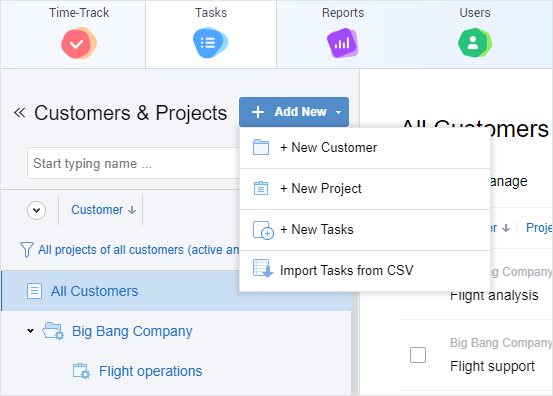
You can overview and edit project details (deadlines, task statuses, number of hours spent on different pieces of work, etc.) either in the project settings panel or on the Kanban board. Like so, you will have a clear visual representation of all the activities needed for successful project realization.
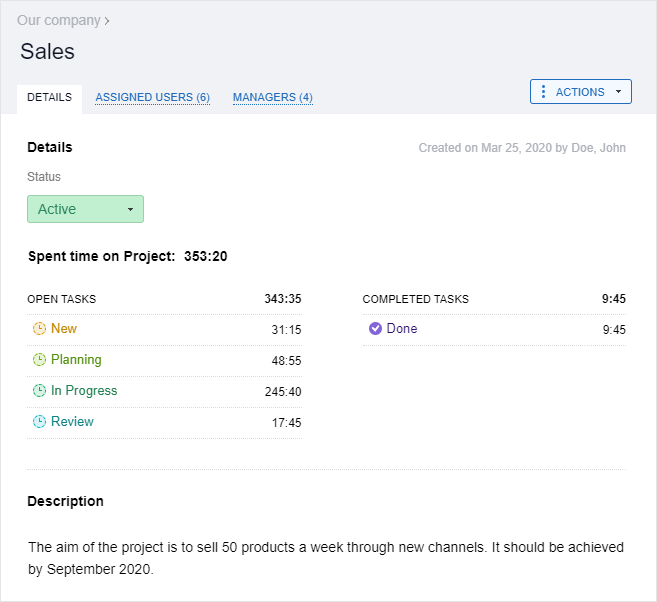
2. Time Estimation
When implementing time estimation techniques that imply the comparison of previous projects’ performance data with your new projects (e.g., analogous estimation), make use of actiTIME’s reporting features.
Here’s how they work.
Once tasks are created and assigned, users can commence tracking time used to fulfill them in actiTIME timesheets. Then, the time tracking data submitted in such a way may be easily retrieved by managers to generate different types of team performance reports, such as:
- Time Track in Detail Report – provides a thorough overview of the amount of time spent on tasks by teams and users, as well as all the comments left by the latter when working on projects.
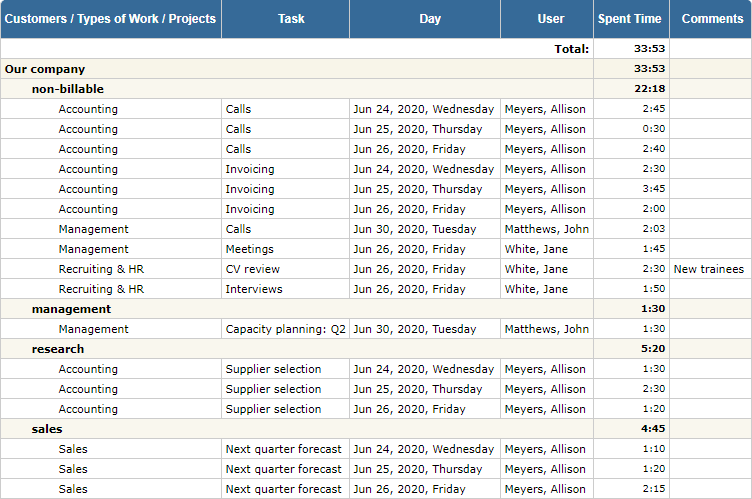
- Estimated vs. Actual Time Report – lets you compare initial time estimates with the actual number of hours spent on various project tasks and displays the variance between them in %.
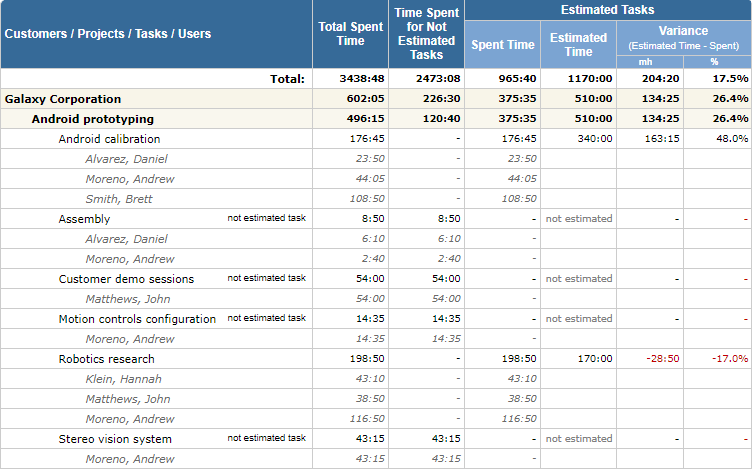
It is possible to configure these and other kinds of time reports in actiTIME for any period, which means they can contain performance data for a completed project as a whole. This type of historical data is extremely valuable whenever you’re estimating time for a similar new project – knowing how many hours were spent on previous project activities and whether your team members were late when delivering some tasks, you can create more accurate and credible schedules for the new endeavor.
3. Schedule Compliance
You may run actiTIME reports not only to get historical evidence but also to monitor current employee performance and see if everything is going as planned. Besides, you can stimulate employee compliance with project time estimates with the aid of the tool’s one other great feature – automatic notifications, which might be configured to alert users whenever they approach a pre-set time tracking limit.
To start using it, the first thing you have to do is identify time estimates for each task in your project: just click on a task name in the Tasks interface to open the settings panel and enter the estimated value in the designated field.
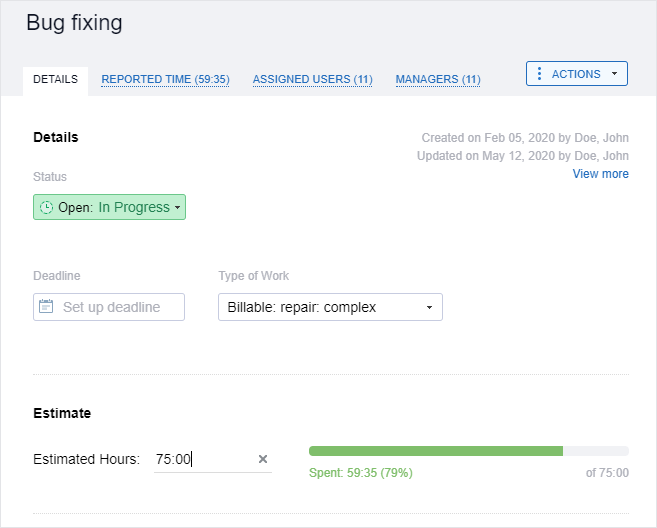
Afterward, you can proceed to the Notifications window in actiTIME’s general settings and establish preferable rules for alert sending. You may choose to notify users when they have worked off a certain percentage of the predetermined time limit: 50%, 70%, 90%, etc. This simple measure may significantly reduce the risk of schedule overruns since it increases employee awareness of its existence and encourages them to adhere to initial project estimates.
Accurate Time Estimation in actiTIME
actiTIME is capable of supporting managers in the creation of correct project schedules, as well as during the planning phase and the application of developed time estimates in actual work. Moreover, this tool incorporates plenty of features that can help you boost team productivity and manage projects more efficiently. Thus, its assistance is rather indispensable if you’re aspiring to attain more successful project outcomes.
















































